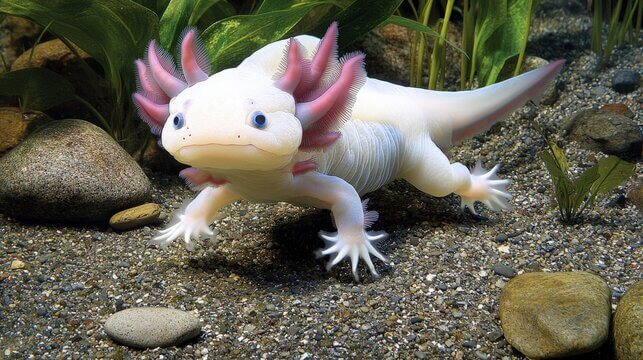Jackal Overview: Species, Habits, and Conservation Insights
The jackal is a fascinating wild canid known for its adaptability and cunning nature. Spread across Africa, Asia, and parts of Europe, jackals belong to the family Canidae, which also includes dogs, wolves, and foxes.
This article explores the jackal’s scientific classification, physical characteristics, habitat, behavior, diet, reproduction, predators, conservation status, and more, offering a comprehensive look at this intelligent species.
Contents
Scientific Classification
The jackal species are divided into three main types:
- Golden Jackal (Canis aureus)
- Black-backed Jackal (Canis mesomelas)
- Side-striped Jackal (Canis adustus)
Taxonomy:
- Kingdom: Animalia
- Phylum: Chordata
- Class: Mammalia
- Order: Carnivora
- Family: Canidae
- Genus: Canis
- Species: Various, including C. aureus, C. mesomelas, and C. adustus
The golden jackal is closely related to wolves and coyotes, while the black-backed and side-striped jackals represent more ancient lineages.
Physical Characteristics

Jackals are medium-sized canids with slender builds, long legs, and bushy tails. Their physical characteristics vary slightly between species:
- Size: Jackals typically stand 40–50 cm (16–20 in) at the shoulder and weigh between 6 to 14 kg (13 to 31 lbs).
- Coat: The golden jackal has a golden-yellow coat that can appear more brown or reddish depending on the season, while the black-backed jackal features a distinctive black stripe down its back. As its name suggests, the side-striped jackal has faint white stripes along its sides.
- Eyes and Ears: Jackals have sharp eyesight and large, upright ears, effectively detecting predators and prey.
- Teeth: Their sharp canine teeth are adapted for omnivorous feeding.
Habitat and Distribution
Jackals are highly adaptable and occupy a wide range of habitats. Their distribution spans Africa, the Middle East, Europe, and Asia. Different species prefer distinct environments:
- Golden Jackal: Found in grasslands, savannas, and even mountainous regions. They have expanded into parts of Europe and are highly adaptable to urban settings.
- Black-backed Jackal: Common in the savannas and woodlands of southern and eastern Africa.
- Side-striped Jackal: Prefers moist habitats such as forests, marshes, and areas near rivers in central and south Africa.
Behavior and Social Structure

Jackals are known for their versatility in both hunting and scavenging. While primarily nocturnal, they can also be active in less disturbed areas during the day.
Social Structure:
Jackals are monogamous, forming long-term pair bonds, and often live in small family groups consisting of a mated pair and their offspring. Unlike wolves, they rarely form large packs, but they will cooperate in pairs or small groups during hunts or territorial defense.
Communication:
Jackals are highly vocal, using a wide range of vocalizations to communicate. They are famous for their haunting, yipping calls, often heard at dusk and dawn. These calls help reinforce social bonds and mark territorial boundaries.
Diet and Hunting Techniques
Jackals are omnivores with a highly varied diet. They feed on small to medium-sized mammals, birds, reptiles, insects, and plant matter, including fruits and berries. Their scavenging behavior makes them familiar visitors to human settlements, where they may feed on scraps.
- Golden Jackal: This species is more opportunistic, hunting small prey like rodents and birds but also scavenging carrion and human waste.
- Black-backed and Side-striped Jackals: These species are skilled hunters known for taking down prey larger than themselves, such as antelope calves, in coordinated pairs.
Hunting Techniques:
Jackals use both stealth and speed in hunting. They are also known for following larger predators, such as lions, to scavenge leftovers. Their keen sense of smell helps them locate food from great distances.
Reproduction and Life Cycle
Jackals typically breed once a year. After a gestation period of around 60–63 days, the female gives birth to a litter of 2 to 6 pups, usually in hidden dens or burrows.
- Pups: Born blind and dependent, jackal pups are cared for by both parents. Older siblings may also help in rearing the young.
- Maturation: Pups are weaned after 8 to 10 weeks and begin learning hunting skills from their parents.
- Lifespan: In the wild, jackals live for around 8 to 10 years, though they can survive up to 15 years in captivity.
Predators and Threats
Jackals face several predators, including larger carnivores like lions, leopards, and hyenas. Birds of prey and snakes may also prey on young jackals. However, humans pose the greatest threat, primarily through habitat destruction, hunting, and poisoning.
Conservation Status
The conservation status of jackals varies by species:
- Golden Jackal: Listed as Least Concern by the IUCN due to its adaptability and wide range.
- Black-backed and Side-striped Jackals: Also listed as Least Concern, though localized threats from habitat loss and hunting exist.
Conservation efforts focus on mitigating human-wildlife conflict, especially in areas where jackals are seen as pests due to livestock predation.
Interesting Facts about Jackals
- Jackals are sometimes called “nature’s cleaners” due to their scavenging habits, which help keep ecosystems clean.
- In Egyptian mythology, the god Anubis, associated with mummification and the afterlife, is depicted with the head of a jackal.
- Jackals are fast runners, reaching 40–50 km/h (25–31 mph) when chasing prey or fleeing predators.
Evolutionary History
Jackals belong to the Canidae family and share a common ancestor with other canids, such as wolves, foxes, and domestic dogs. The fossil record shows that the ancestors of modern jackals roamed Africa and Eurasia millions of years ago. Jackals likely evolved their smaller, more agile forms as they adapted to fill different ecological niches in open grasslands and forests.
Relationship with Domestic Dogs:
Interestingly, the golden jackal can interbreed with domestic dogs, producing fertile offspring, known as “jackal-dog hybrids” or “dogal.”
Relationship with Humans
Historically, jackals have had a mixed relationship with humans. While often considered nuisances for their scavenging habits and occasional livestock predation, jackals have also been revered in some cultures. As mentioned, the ancient Egyptians associated the jackal with Anubis, the god of the dead.
In modern times, jackals have adapted well to human-modified landscapes and can often be found near villages and cities, scavenging for food. However, this proximity has also increased conflicts, with farmers and villagers usually attempting to control their populations through hunting or poisoning.
Jackals and Folklore:
Jackals appear in the folklore of several cultures, often depicted as cunning and intelligent animals. In African folktales, the jackal is frequently portrayed as a trickster, outsmarting other animals and even humans.
Conclusion
Jackals are highly adaptable and intelligent animals that play a crucial role in their ecosystems as hunters and scavengers. Though they face challenges from human encroachment, their resilience ensures they continue to thrive in various environments. By understanding their behavior, ecology, and importance in folklore, we can appreciate the jackal’s fascinating place in the natural world.
- Golden Retriever Pros and Cons: What Every Pet Parent Should Know - 15 September 2025
- Cane Corso Dog Breed: Health, Care, and Lifespan - 14 September 2025
- Catahoula Leopard Dogs: Description, Temperament, Lifespan, & Facts - 21 July 2025







